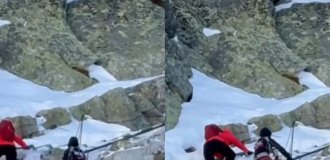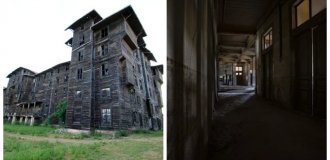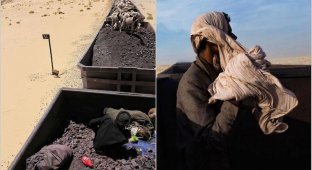Traveling across the Sahara on a freight train (27 photos + 1 video)
Photojournalist and extreme travel enthusiast Mykolas Juodele talked about how he traveled through the Sahara Desert on a freight train carrying iron ore. 
“Travelling under the starry sky across the Sahara Desert is hard to forget. The feeling that your life depends only on the train, since you are hundreds of kilometers from the nearest village. The silence of the desert when the train stops, and the deafening roar when it starts to move. Hot food prepared by shepherds on the train. Hundreds of sheep and goats on top of wagons loaded with iron ore...
These are just some of the unforgettable moments that Mykolas Juodele remembers about his journey on a freight train through the Sahara Desert. He considers this train journey through Mauritania (West Africa) the most extreme of his life. 
The Mauritania Railway has been transporting iron ore across the Sahara Desert since 1963. The train travels on a single line, 704 km long, connecting the port of Nouadhibou with the Zouerat mines.
Mikolas was inspired to ride this train after his first visit to Mauritania in 2013. And at the same time, it’s better to explore the country by visiting the “outback” itself.
“I came back to Mauritania specifically to photograph the iron ore train because I thought it was an extremely unique phenomenon, frightening and beautiful,” he said. “The train is so long that standing on top of the last car you can’t see the locomotives that pull it.”
In March 2016, the photojournalist returned for a month with the goal of riding the railway back and forth several times and capturing the journey on film. A one-way trip takes between 16 and 20 hours, he said, and the entire time you're "basically driving in a cloud of dust." Or longer if technical problems arise.
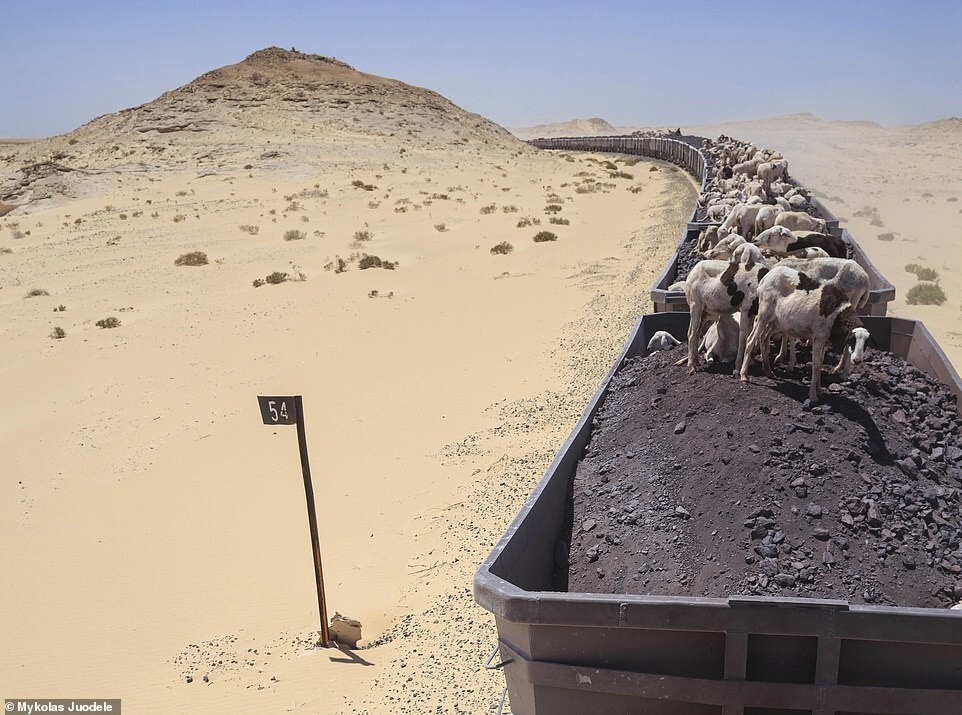
“The feeling that your life depends only on the train, since you are hundreds of kilometers from the nearest village”
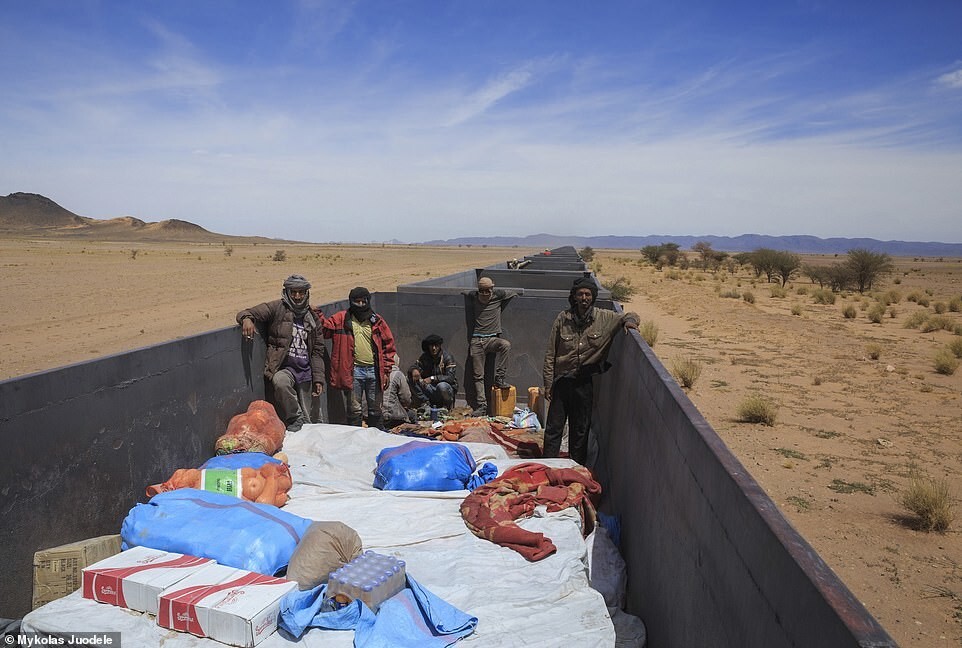
“The train is so long that, standing on top of the last car, it is impossible to see the locomotives that pull it.”
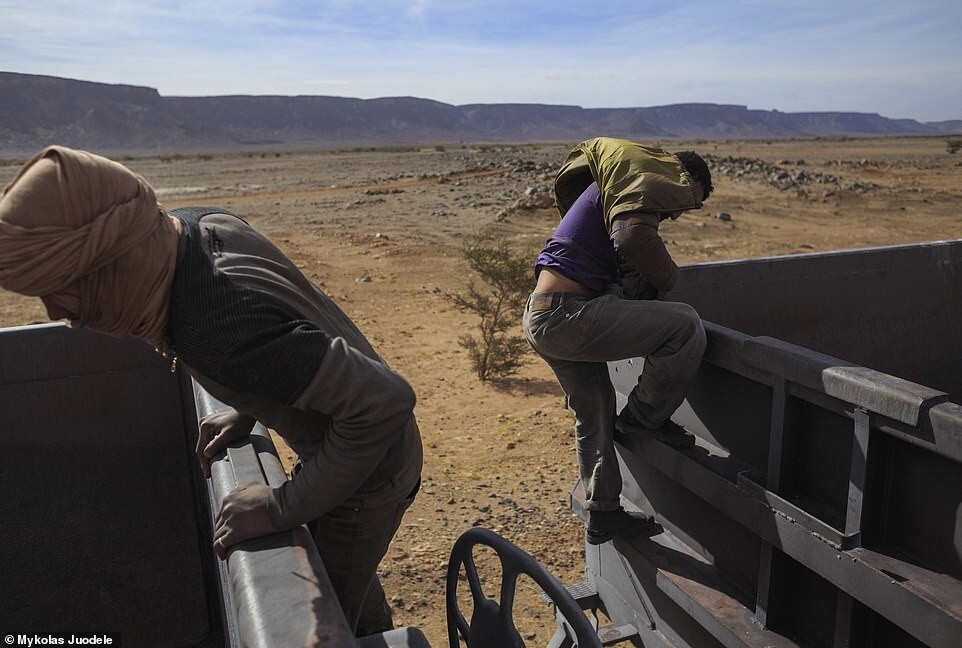
The train travels on a single 704 km long line connecting the port of Nouadhibou with the Zouerat mines

Mauritanian man adjusting his headscarf on board a train
Mikolas caught the train at the tiny train station in Nouadhibou, located on the outskirts of the coastal town. The train does not have a timetable, but it is known that it usually arrives in the afternoon. Passengers arrive at the station starting at 13:00 and can sometimes wait until 17:00 to board. When the train finally appears, passengers begin to fill the empty carriages.

Mykolas Juodele
The train's passengers are local shepherds with their sheep and goats, as well as traders who transport their goods from Nouadhibou to sell them in the mines of Zouerate. People usually transport food items such as rice, vegetables, dates, cans of beans, tuna and bottles of carbonated drinks. They buy them cheap in the port city and sell them for a little more in Zuerat, a city near the iron mines.
There are several towns near the mines, home to several thousand people, for whom the railway is the only means of transportation, and there are practically no roads connecting them with the rest of the country.
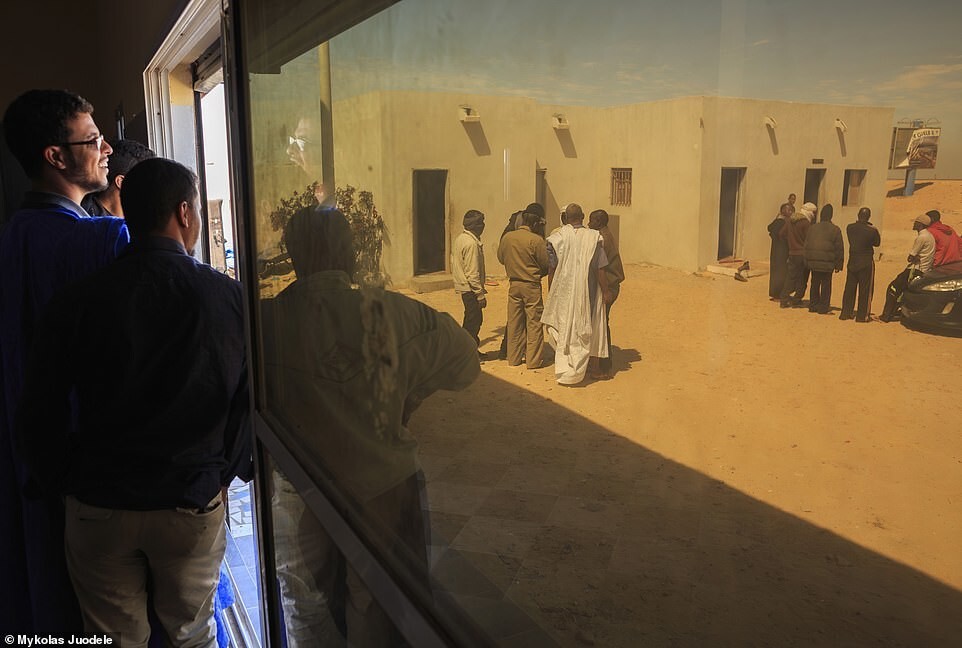
Mikolas caught the train at the tiny Nouadhibou train station, located on the outskirts of the coastal town
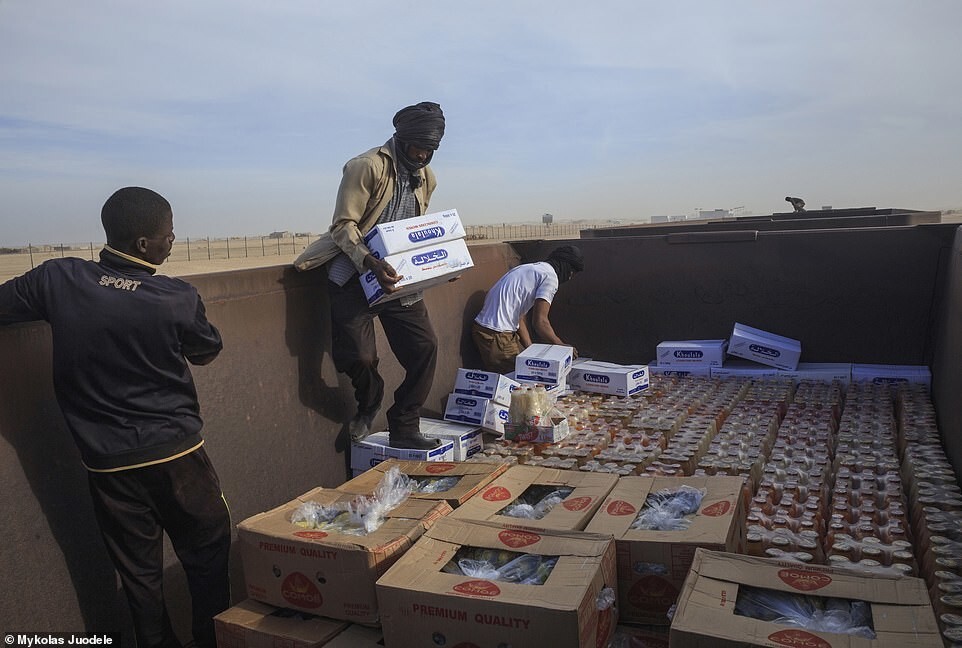
Mauritanian traders load boxes of juice, bananas and couscous into a freight car in Nouadhibou
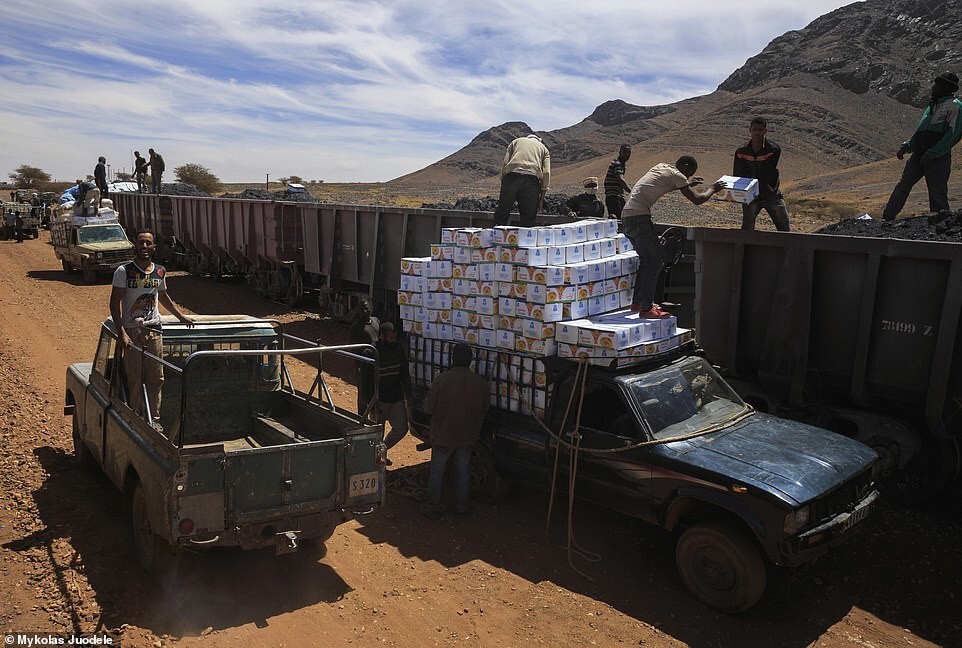
According to Mikolas, some use the train to travel between the mines and the port city, while others transport personal belongings in empty carriages.
The main task of the train is to transport iron ore from the mines to the port of Nouadhibou, from where it is exported by ship to China, the EU and other countries.
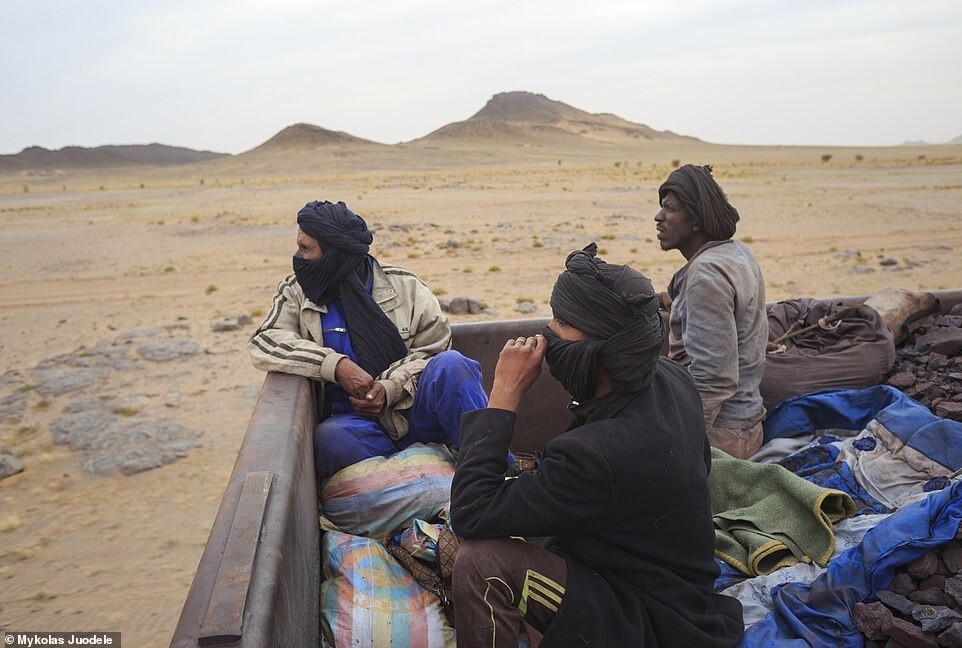
Mykolas was traveling on a train with local shepherds
Iron ore is one of Mauritania's most important exports. It accounts for about 50 percent of Mauritania's total exports. So, in essence, this train is responsible for half of the country's exports.
According to Mikolas, passengers are arranged on board the train to make the journey as comfortable as possible. He saw people preparing food, eating and trying to sleep, lying on the metal floor of the carriage.
“Once inside the carriage, the locals make two piles of sand in opposite corners of the carriage - one to serve as a toilet, the other as a fireplace,” he says.

A shepherd and his goats on a pile of iron ore on a train
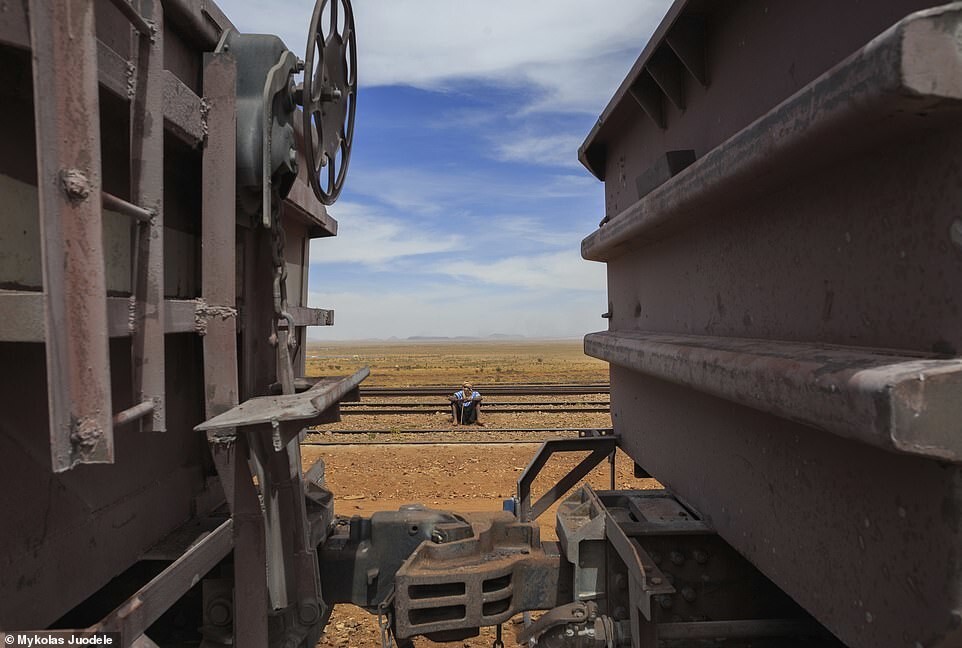
A shepherd sits in front of a train at the end of the track in Zuerate

Mikolas was amazed at the endurance of his fellow passengers. Some people take this train to work and endure the trip several times a month.
“Most people travel in groups, they have pots and pans, and they always make tea and cook food along the way,” Mikolas continues. — The train sometimes stops in the middle of the desert for two hours, and you never know why or when it will start moving again. Then people jump down and go for a walk in the desert, without going far from the train. Sheep have been known to jump off trains in an attempt to escape."
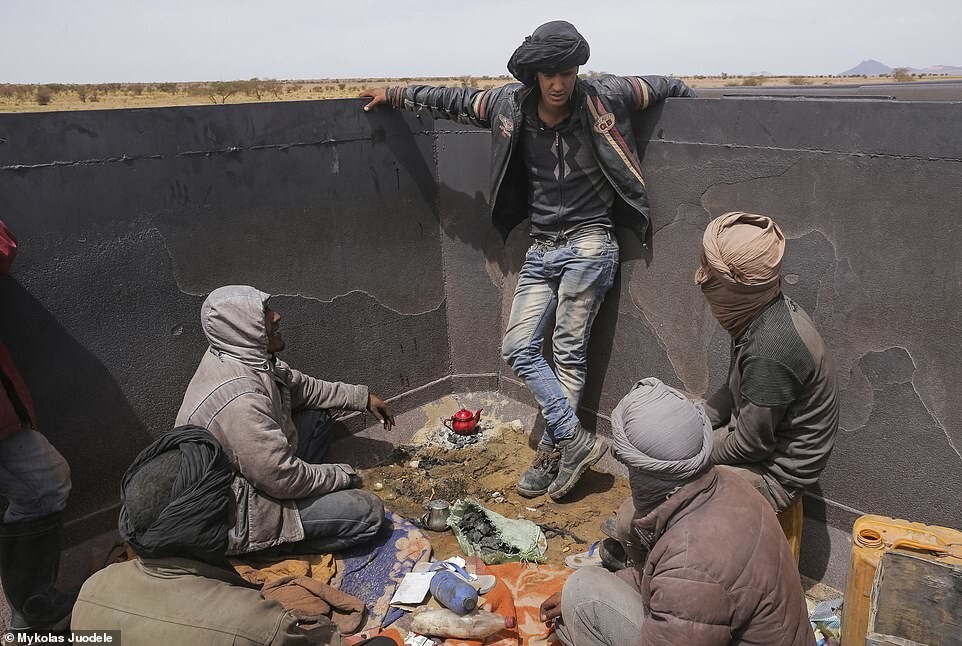
Local residents make two piles of sand in opposite corners of the carriage. One serves as a toilet, the other as a fireplace
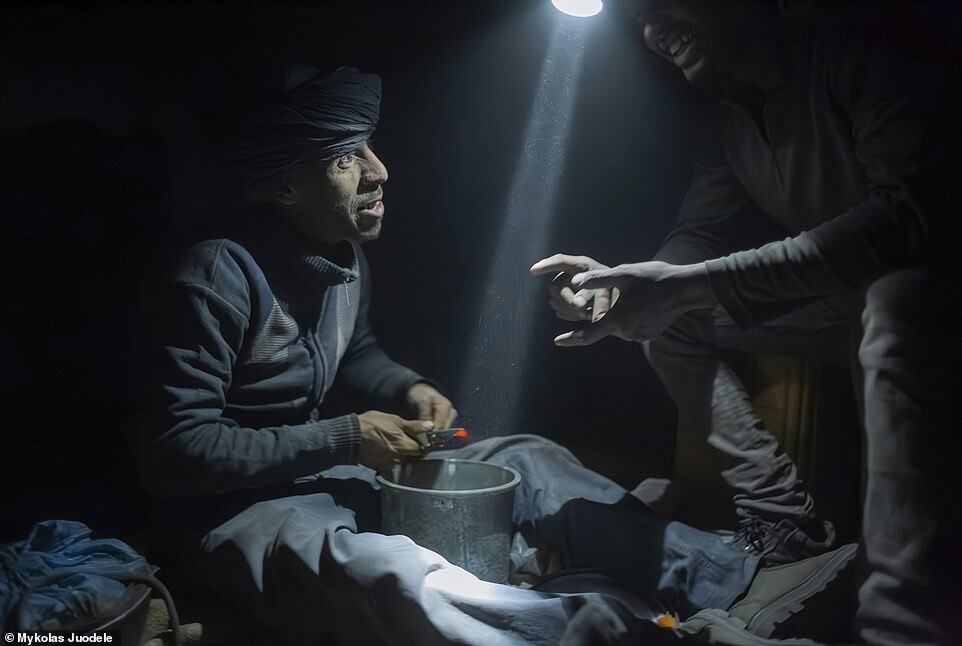
“Most people travel in groups, they have pots and pans, and they always make tea and cook food while traveling.”

Sheep tries to escape
On the way from Nouadhibou to Zouerat, the train stops first in the village of Inal, then in the town of Chum and in the town of Fderik, usually only for a few minutes. Sometimes the train also stops near tiny settlements. But the largest village on the road to the mines is home to only 2,500 people. Other places are just a few scattered shacks in the middle of nowhere.

Arrival of the train in Chum
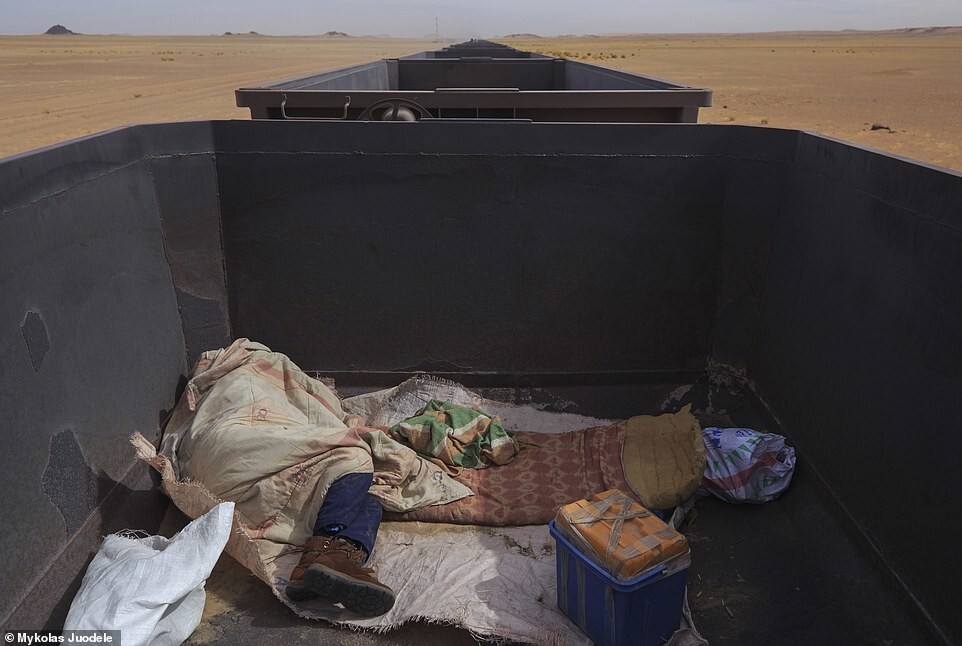
Sleeping passenger
Most of the journey is occupied by monotonous but mesmerizing desert landscapes, and the train travels at night, leaving Nouadhibou shortly before sunset and continuing its journey in the dark.
“Night is the most difficult part of the journey,” says the photographer. “You just have to wait it out, and then everyone gets up with the sun, makes tea, maybe cooks some other food, and usually the train arrives in Zuerat before noon.”
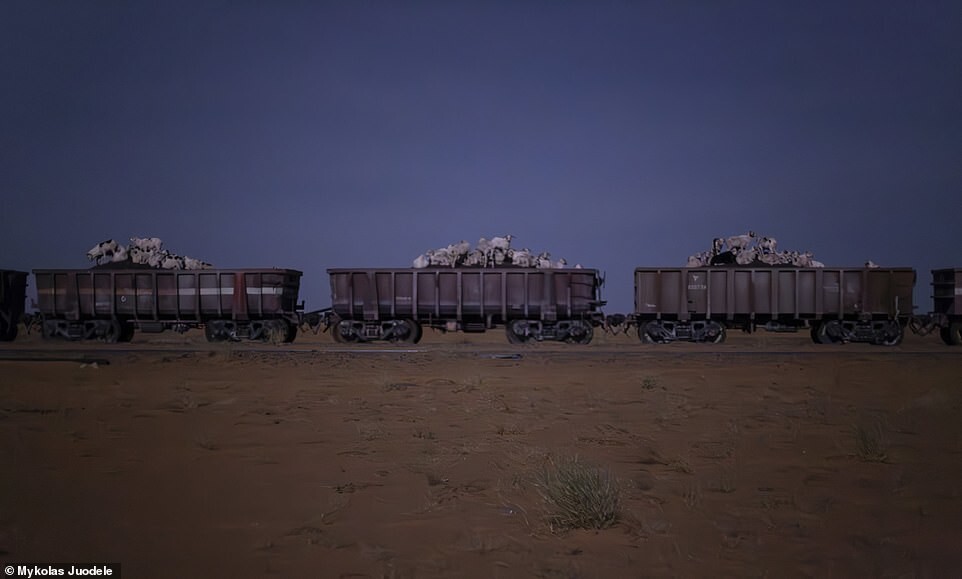
Goats on top of a pile of iron ore on the way back to Nouadhibou
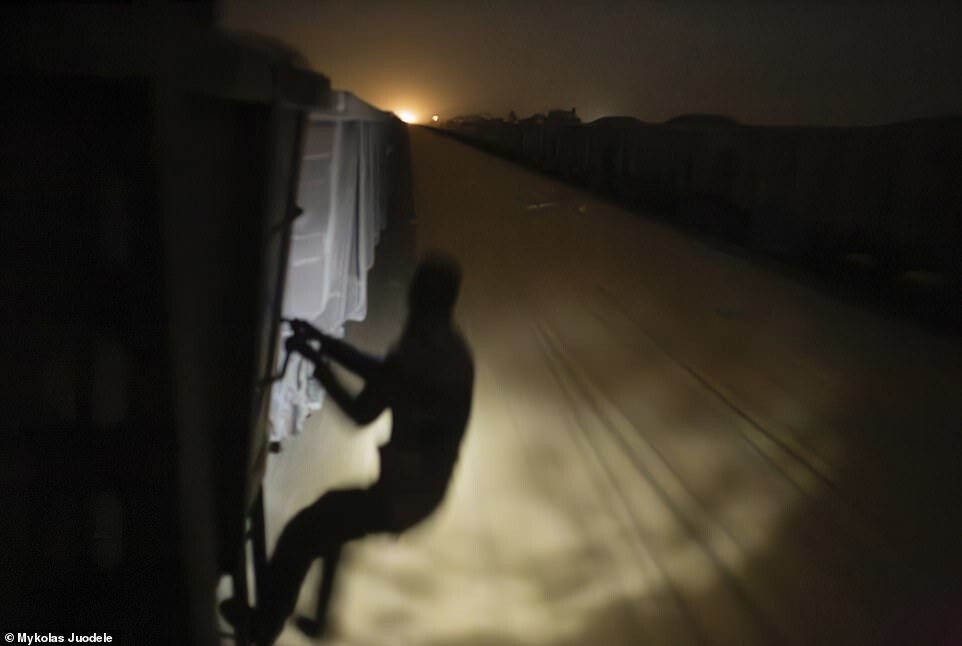
“Most of the way you see monotonous but mesmerizing desert landscapes”
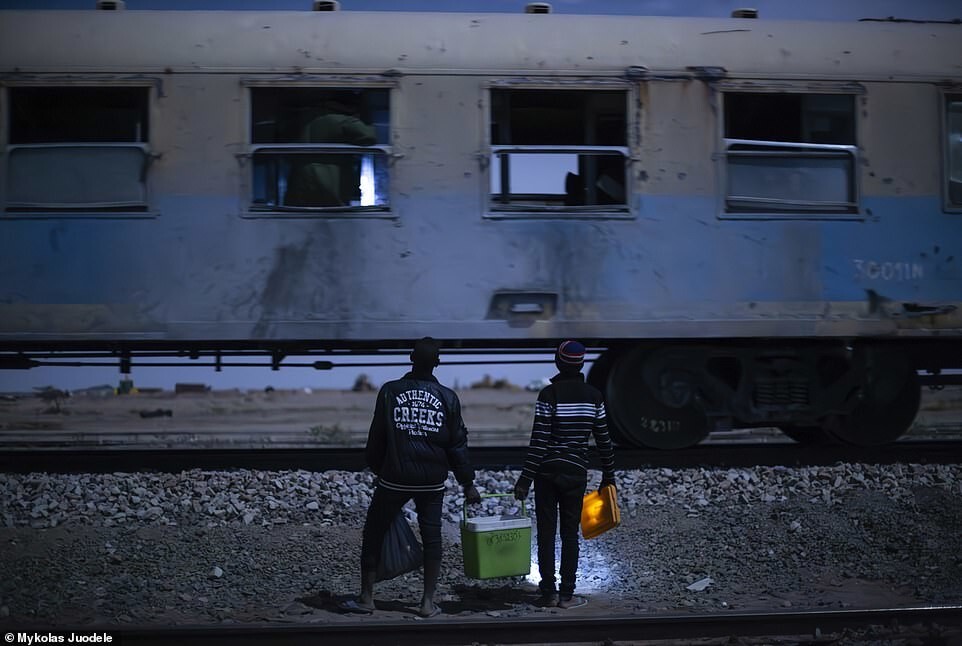
Two young locals selling soft drinks on the side of the railway

A train may stop in the desert for several hours without explanation.
At Zuerat, workers unload the cargo onto trucks and rest briefly before the train is loaded with iron ore and prepared for the return journey.
When asked about the hardest part of the trip, Mikolas said it was "suffering from the sand and iron ore dust, which constantly irritate the eyes."
“It was almost impossible to sleep because of the noise and shaking of the carriages,” he added. “So physically it’s quite a nasty ride – especially on the way to the mines when the train is empty and going faster, causing more dust and shaking.” <br

The train arrives in Zuerat
Overall, Mikolas assessed his adventure positively. He says he has learned not to judge a book by its cover and has changed his view of Mauritania as a country with rude and hostile people. In fact, he said, he met “the kindest people” and there was not a single unpleasant incident.
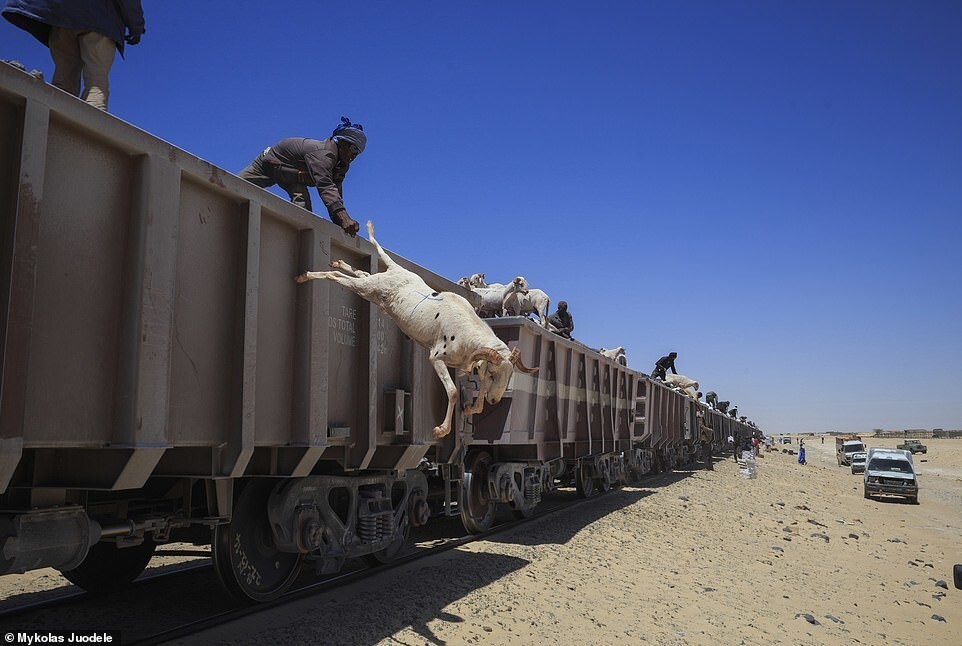
A goat being released from one of the carriages as the train pulls into Nouadhibou station

Zouerat-Nouadhibou railway line
“Mauritania has a negative reputation due to several kidnappings of foreigners that occurred more than ten years ago,” says Mikolas. “It is also known for corruption, slavery and some terrorist organizations possibly operating in its vast deserts. So I was prepared to face much harsher conditions."
However, in reality, according to Mikolas, the country was quite safe, and the people were very kind and helpful. “The workers and passengers on the train were incredibly hospitable and treated me like a friend,” he admits.

Abandoned locomotives in the vicinity of Zouerate
Mikolas was also impressed by the resilience and endurance of the people on the train.
“For some of them it’s a job and they make this trip several times a month. And yet they look joyful and full of optimism. I think it has to do with the adrenaline and the pure magic of riding a freight train through the desert.”
“The endless desert landscapes, the power of the train, the almost spiritual experience of traveling into the depths of the Sahara desert in a shaking freight car - all this is very inspiring and will forever remain in my memory.”

